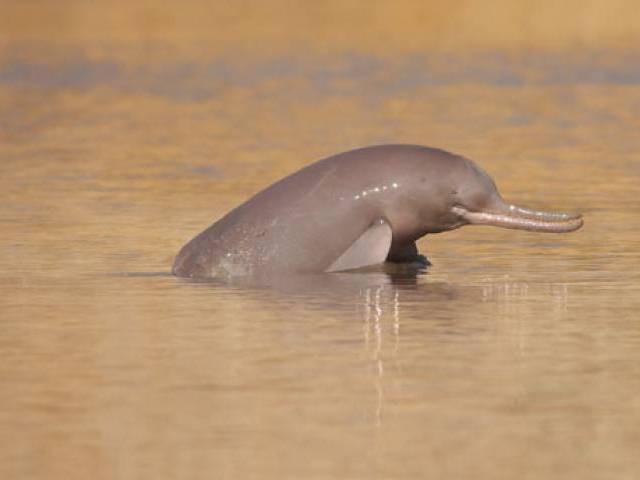‘Pakistan’s endangered species more vulnerable than ever’
WWF says people must be made aware of the importance of each to sustainable ecosystem.

Indus River Dolphin PHOTO: WWF-PAKISTAN
WWF-Pakistan Director General Hammad Naqi Khan, in his message for the day, called for “a last-ditch effort” to not only save all endangered species, but conserve their habitat. “The risk faced by many species in Pakistan is growing in urgency and it is about time we start valuing the importance of each to the sustainability of local ecosystems and ultimately the global ecosystem.”
He also encouraged the youth to get involved in this global effort and add renewed vigour to the cause. “Our organisation is committed to conserving endangered species and we cannot achieve this without heightened public awareness and enthusiasm to preserve the environment that has led to the success of many of our projects,” he added.
Lahore Zoo's darling Suzi dies at 31
This year, the organisation conservation milestones included the birth of two oriental white-backed vulture chicks. The species is on the endangered list. The foundation also reported positive results from the recently concluded Indus river dolphin survey. While these efforts bode well to save these species from extinction, the organisation still believed a lot was yet to be achieved.
Living in a time when the impact of human activity is contributing to, if not causing, climate change, species around the world are in peril, a statement said. “Under the current trajectory, the future of many living organisms in the Anthropocene (current geological age) is uncertain. In fact, several indicators are a cause for alarm.”
WWF International’s Living Planet Report 2016, which measures biodiversity abundance levels based on 14,152 monitored populations of 3,706 vertebrate species, showed a persistent downward trend. On average, the population of the species monitored showed a decline by 58% between 1970 and 2012. Monitored species were increasingly affected by pressures from unsustainable agriculture, fishing, mining and other human activities which contribute to habitat loss and degradation, overexploitation, climate change and pollution.
“In a business-as-usual scenario, this downward trend in species populations continues into the future. United Nations wants to halt the loss of biodiversity and wants to achieve this by 2020,” the statement said. “However, species populations may have declined on average by 67% over the last half-century.
Pakistan is home to a number of endangered species, including the Indian pangolin, snow leopard, the Indus river dolphin and the green turtle. The facts and figures in Pakistan tend to paint a challenging picture, yet there is still plenty of room for optimism.
Published in The Express Tribune, May 20th, 2017.



















COMMENTS
Comments are moderated and generally will be posted if they are on-topic and not abusive.
For more information, please see our Comments FAQ